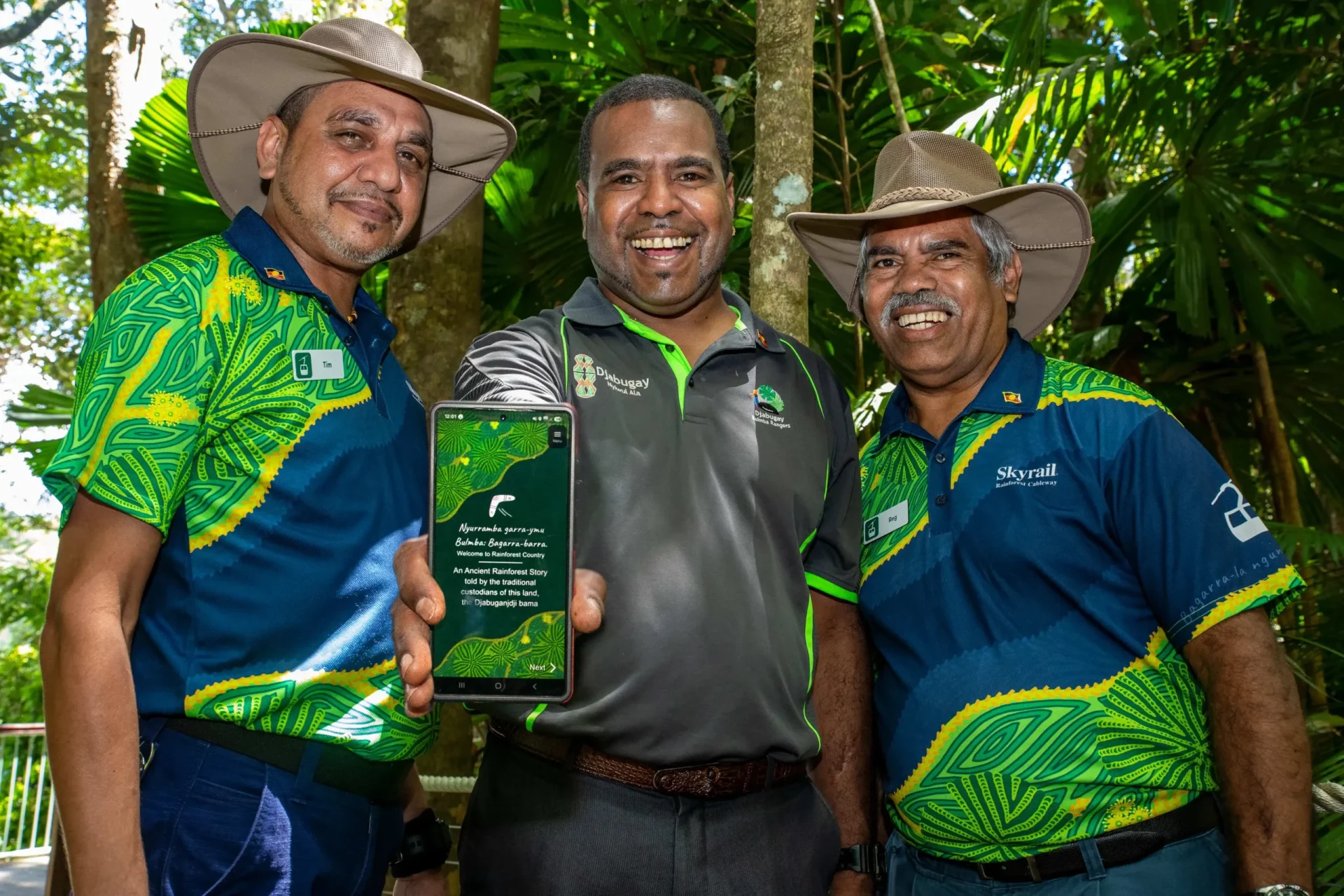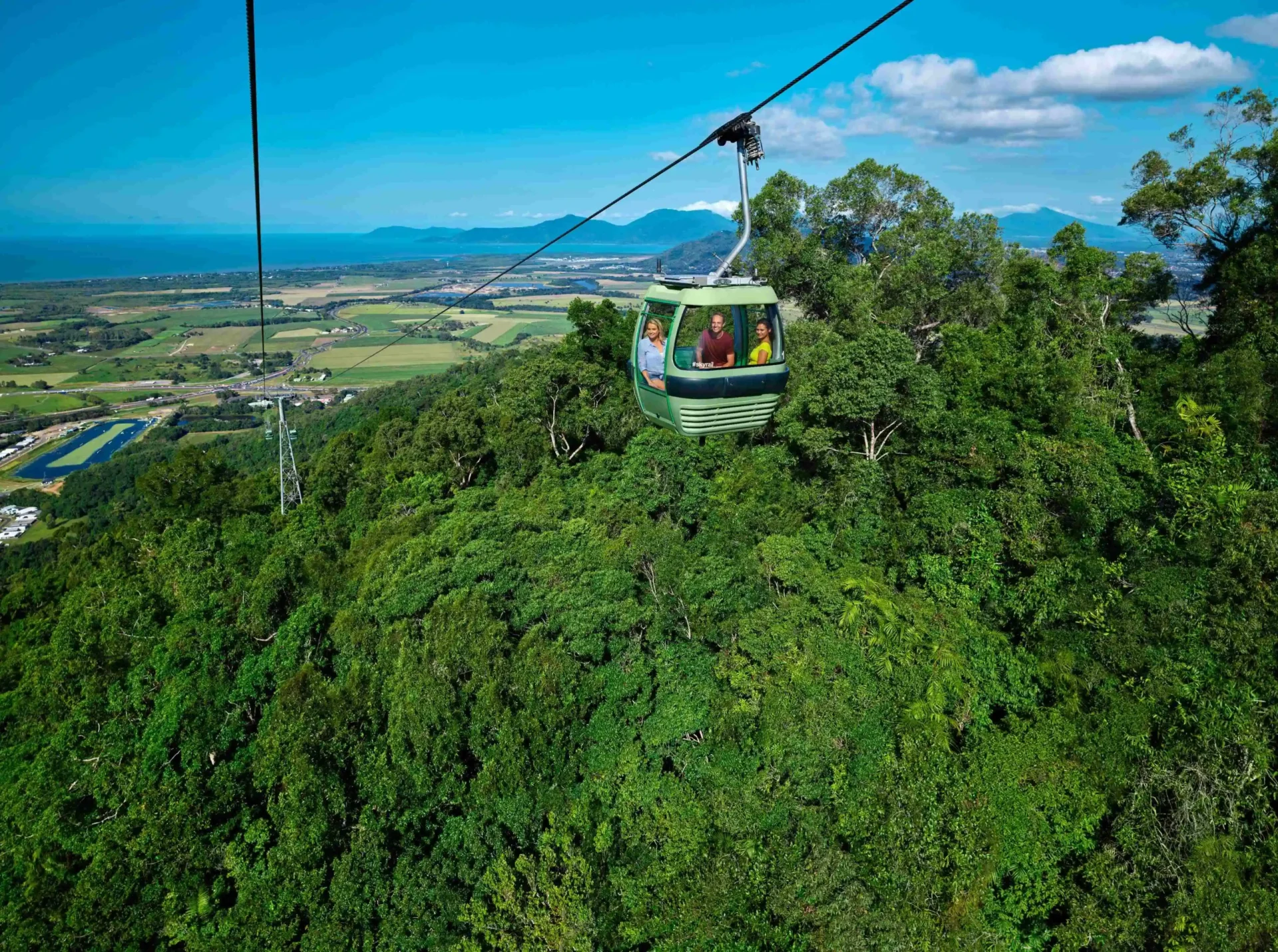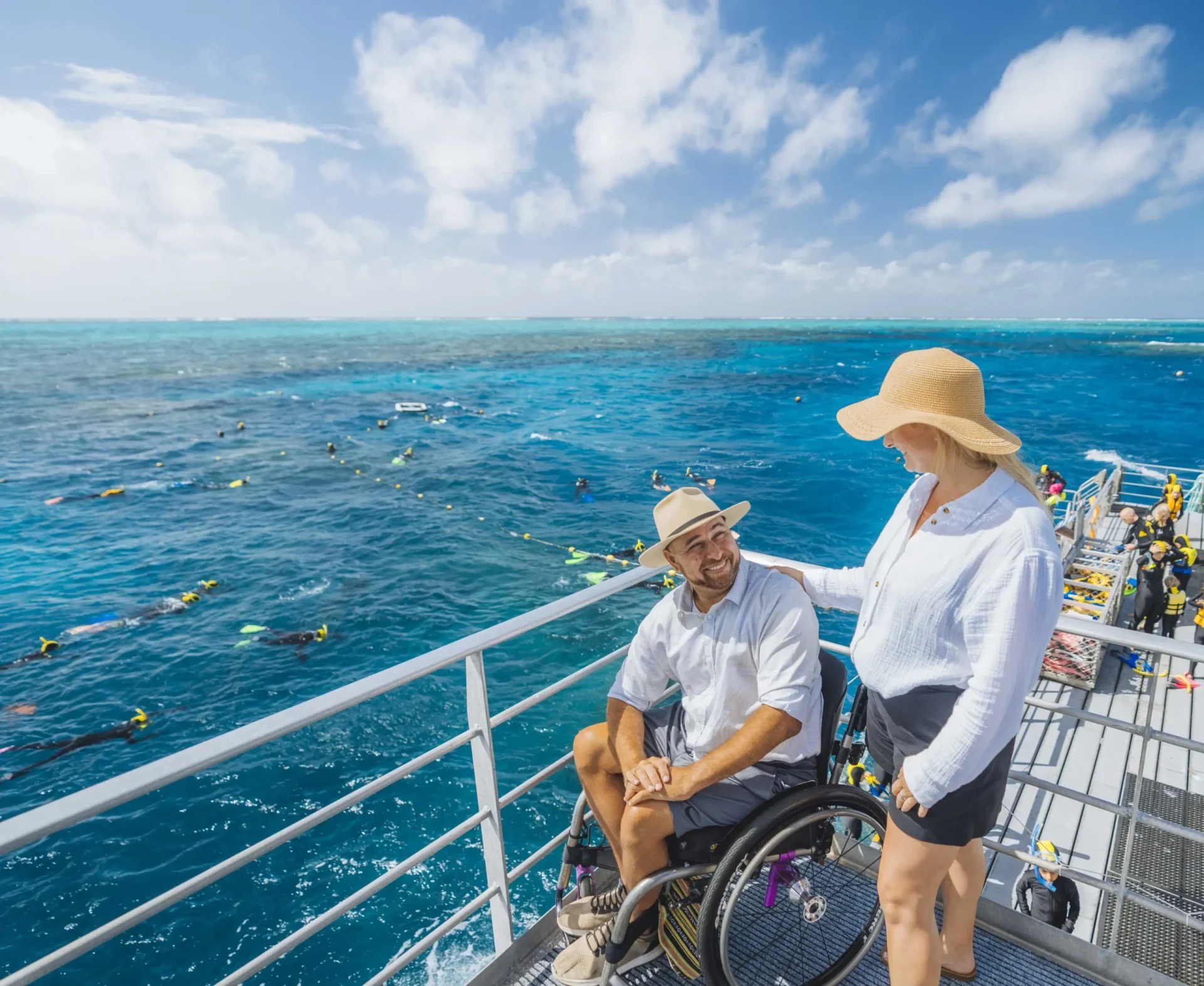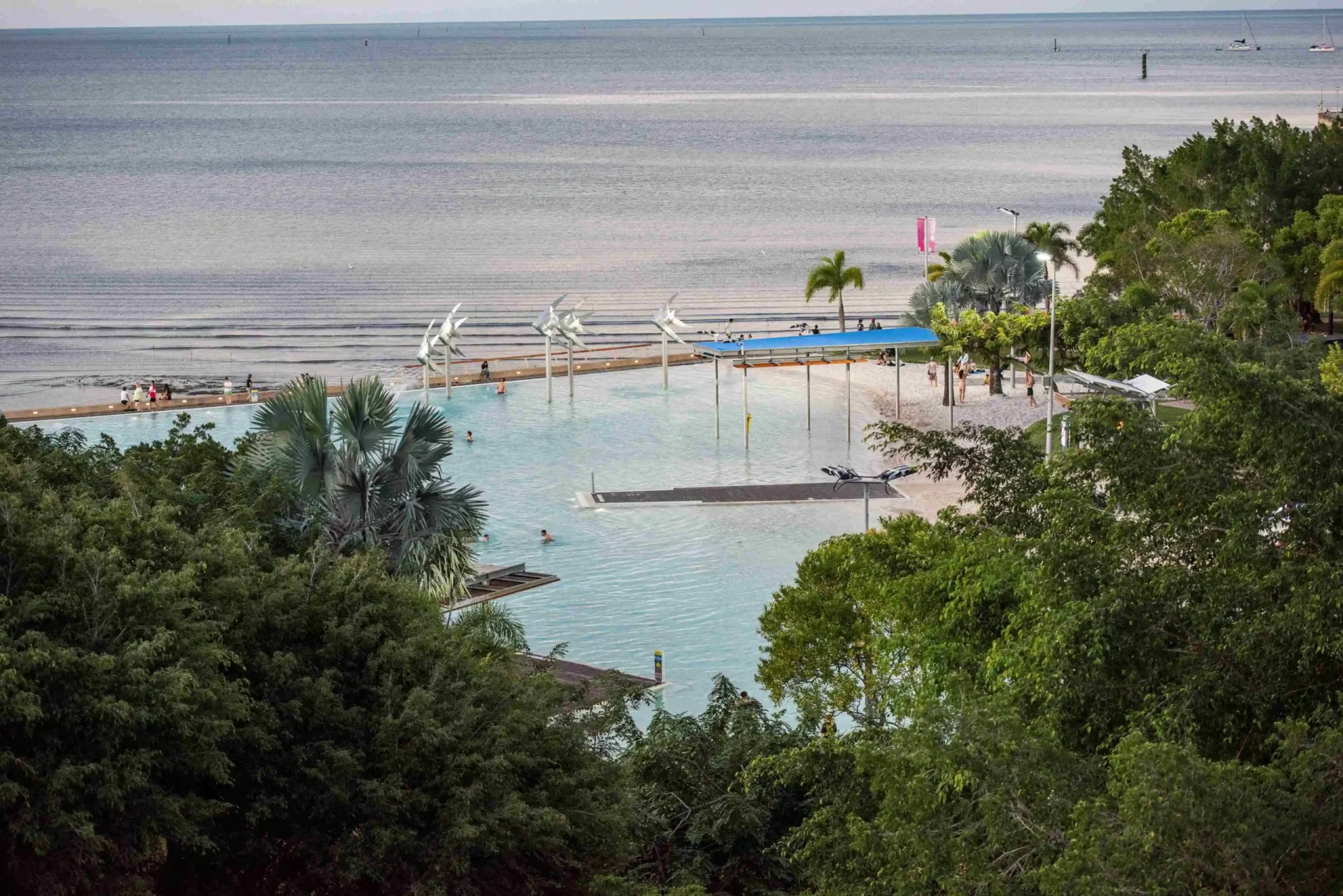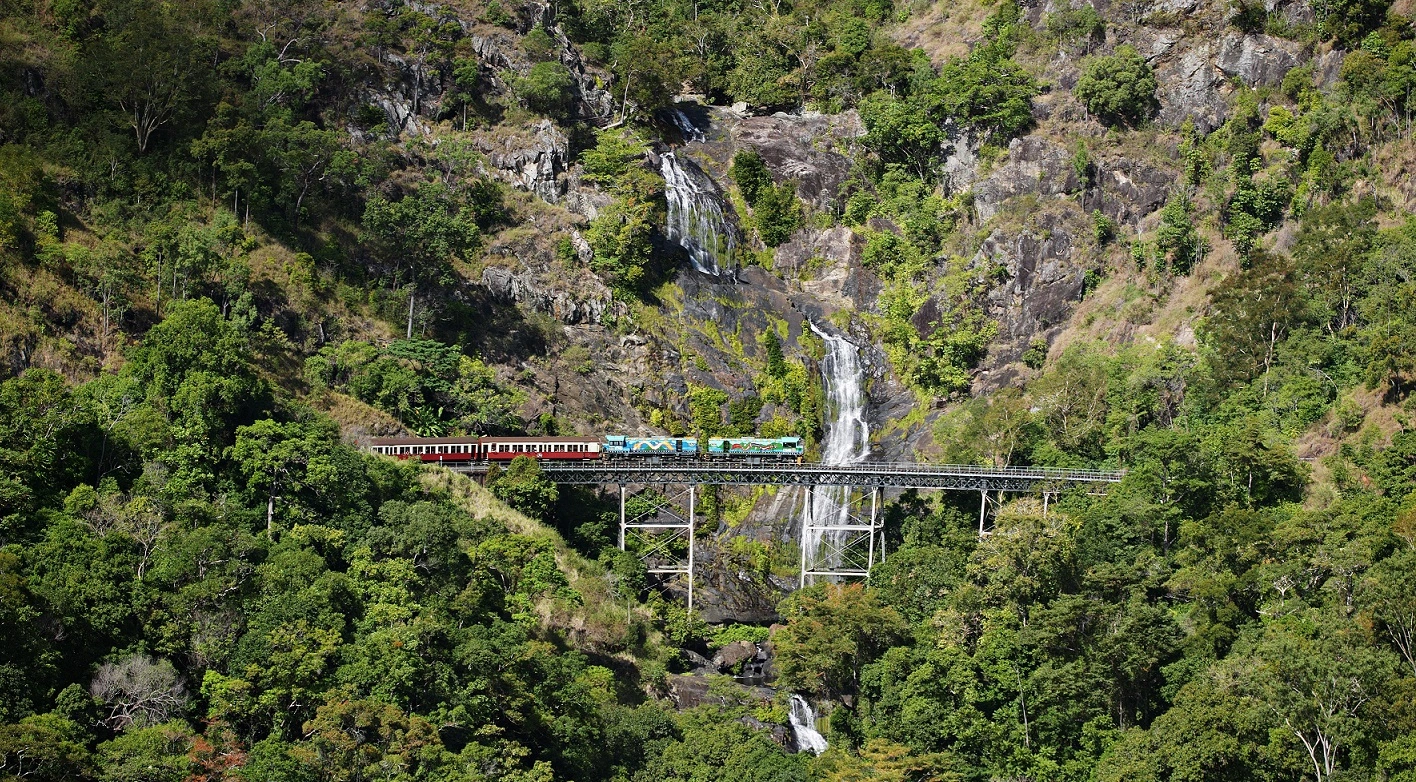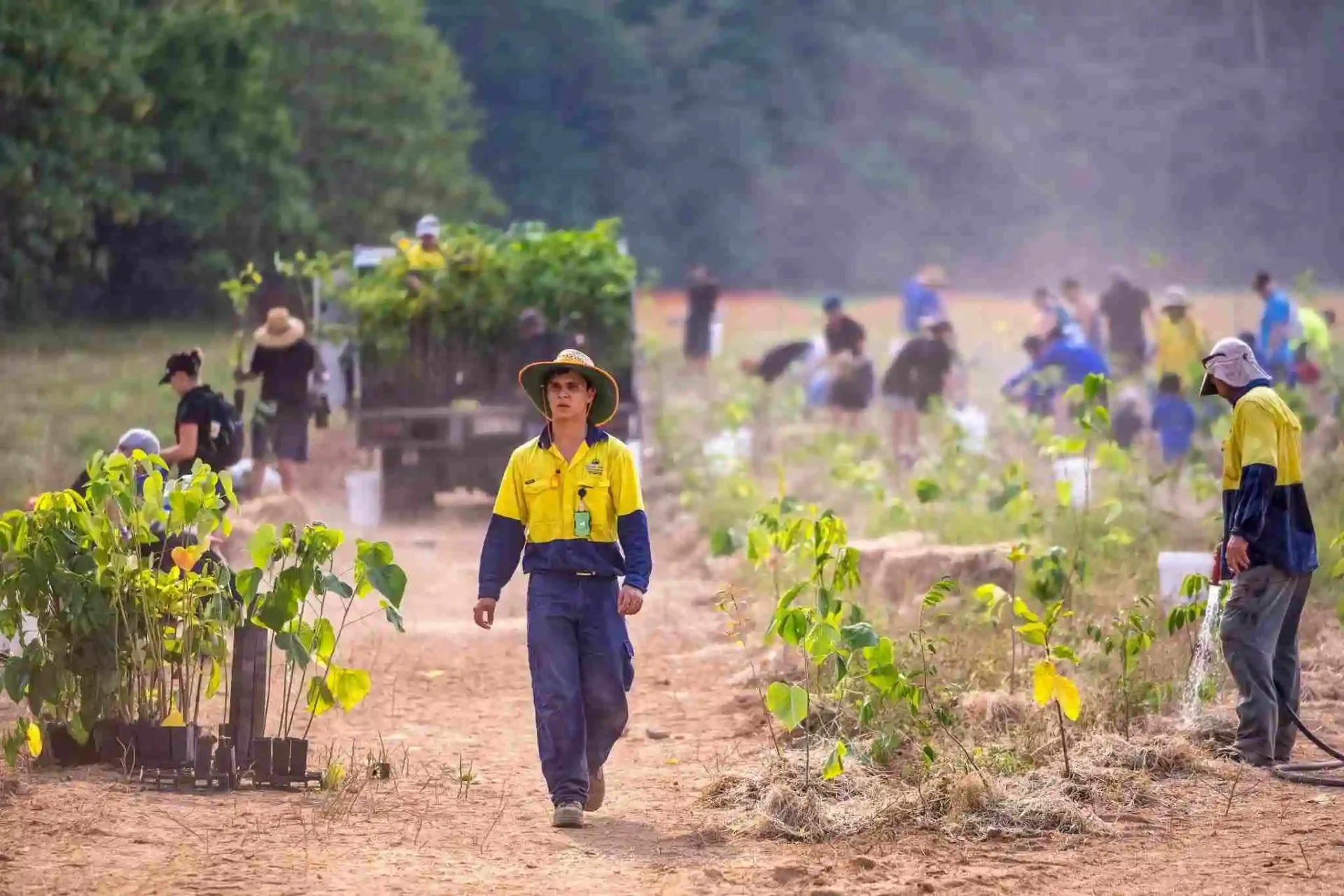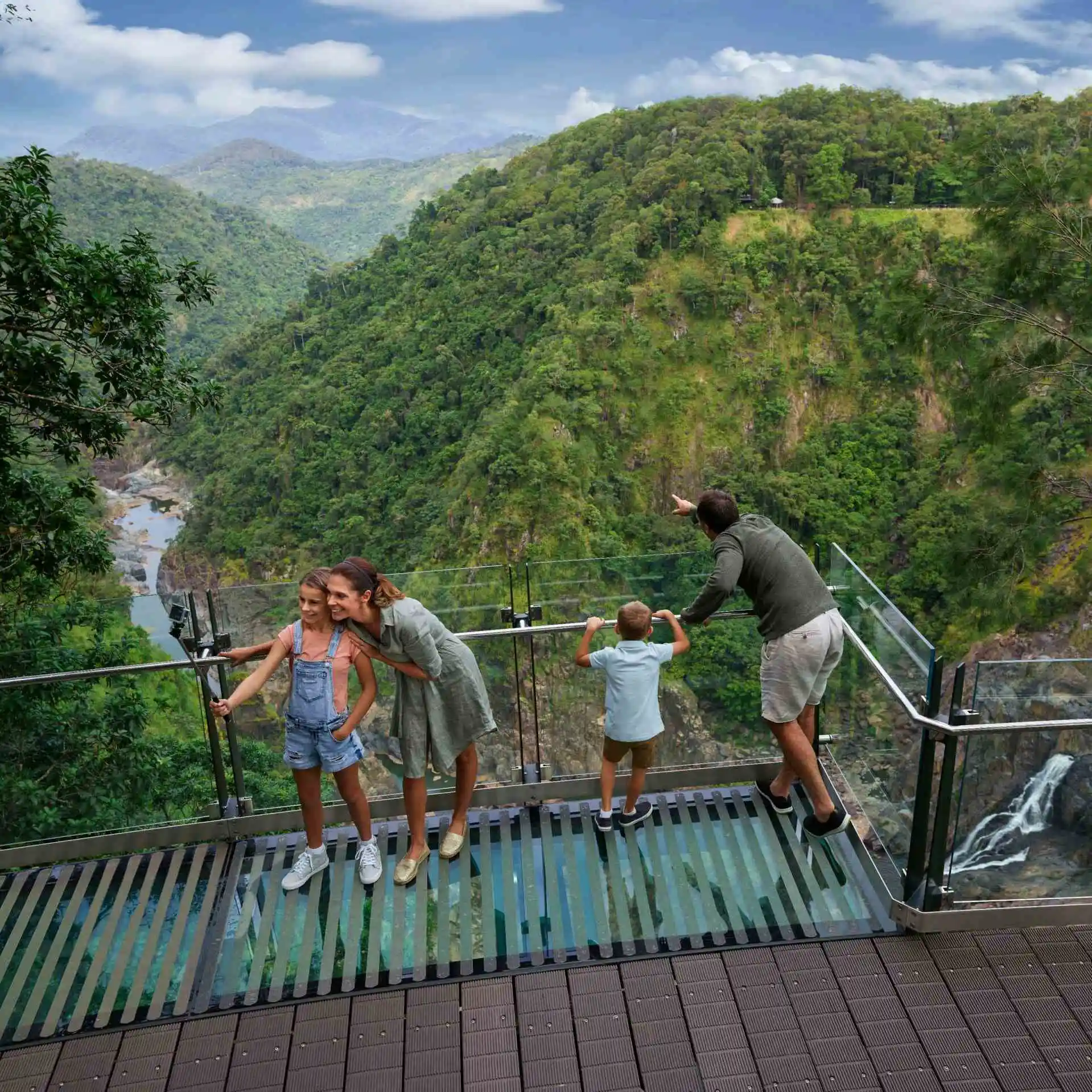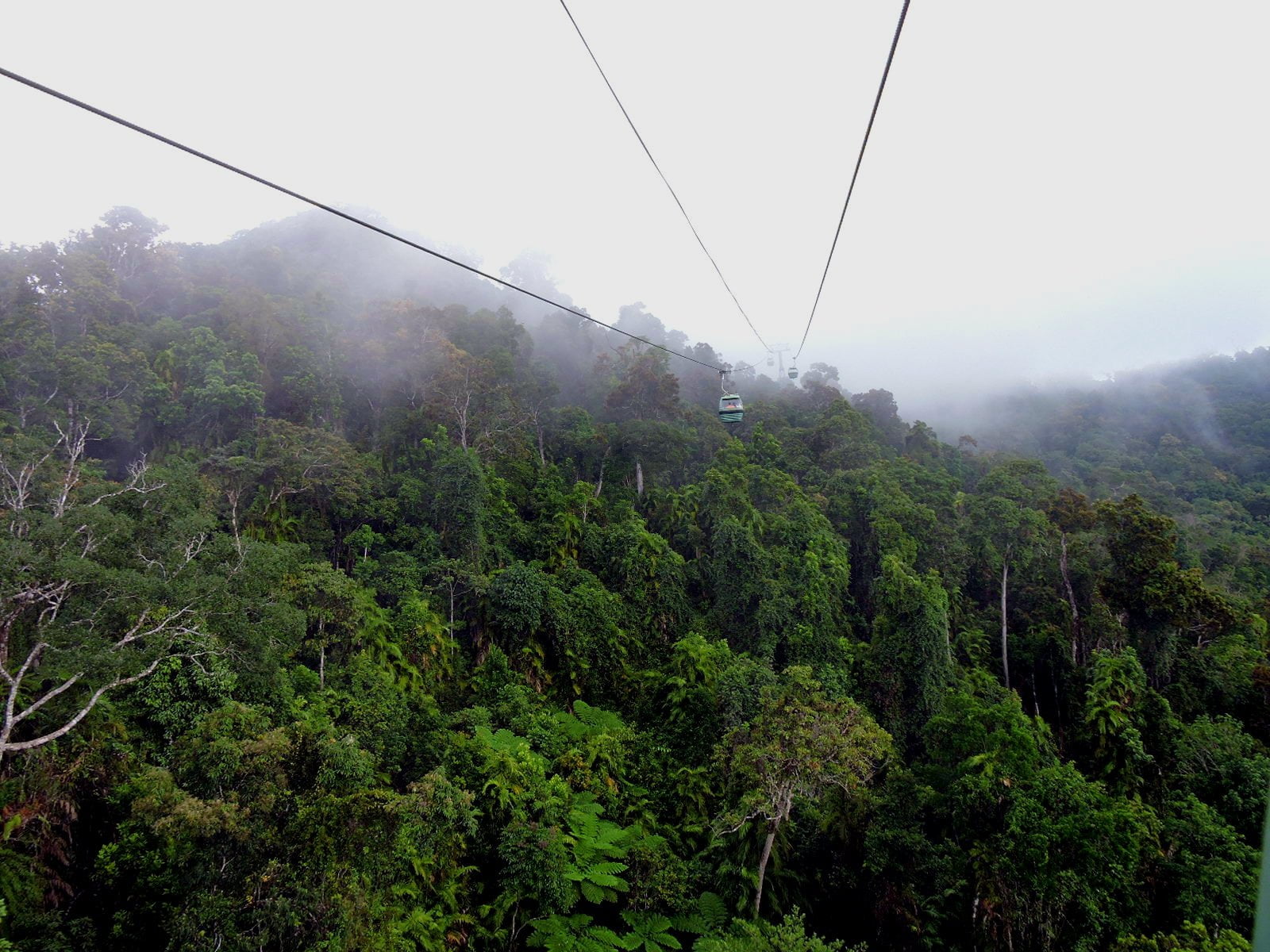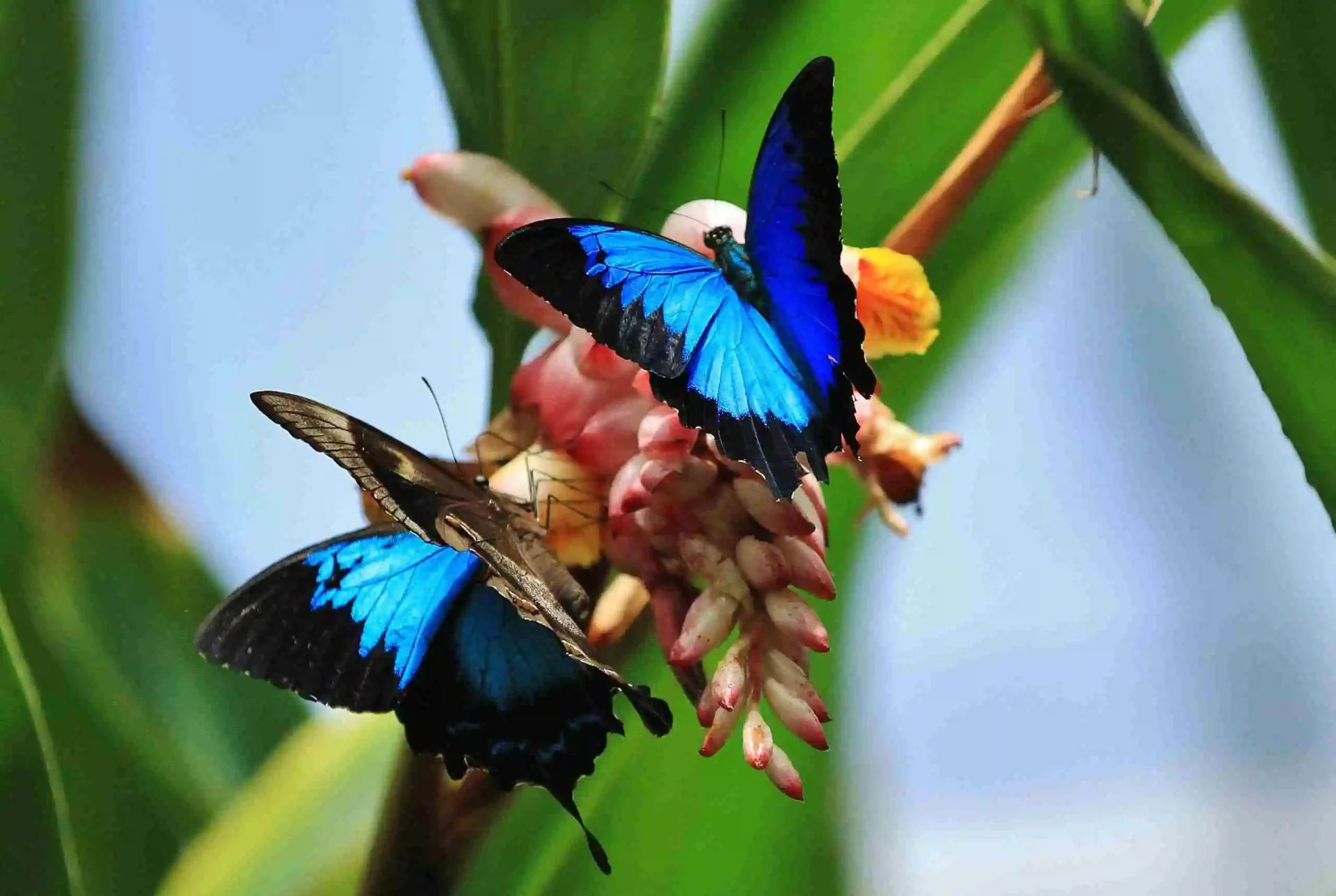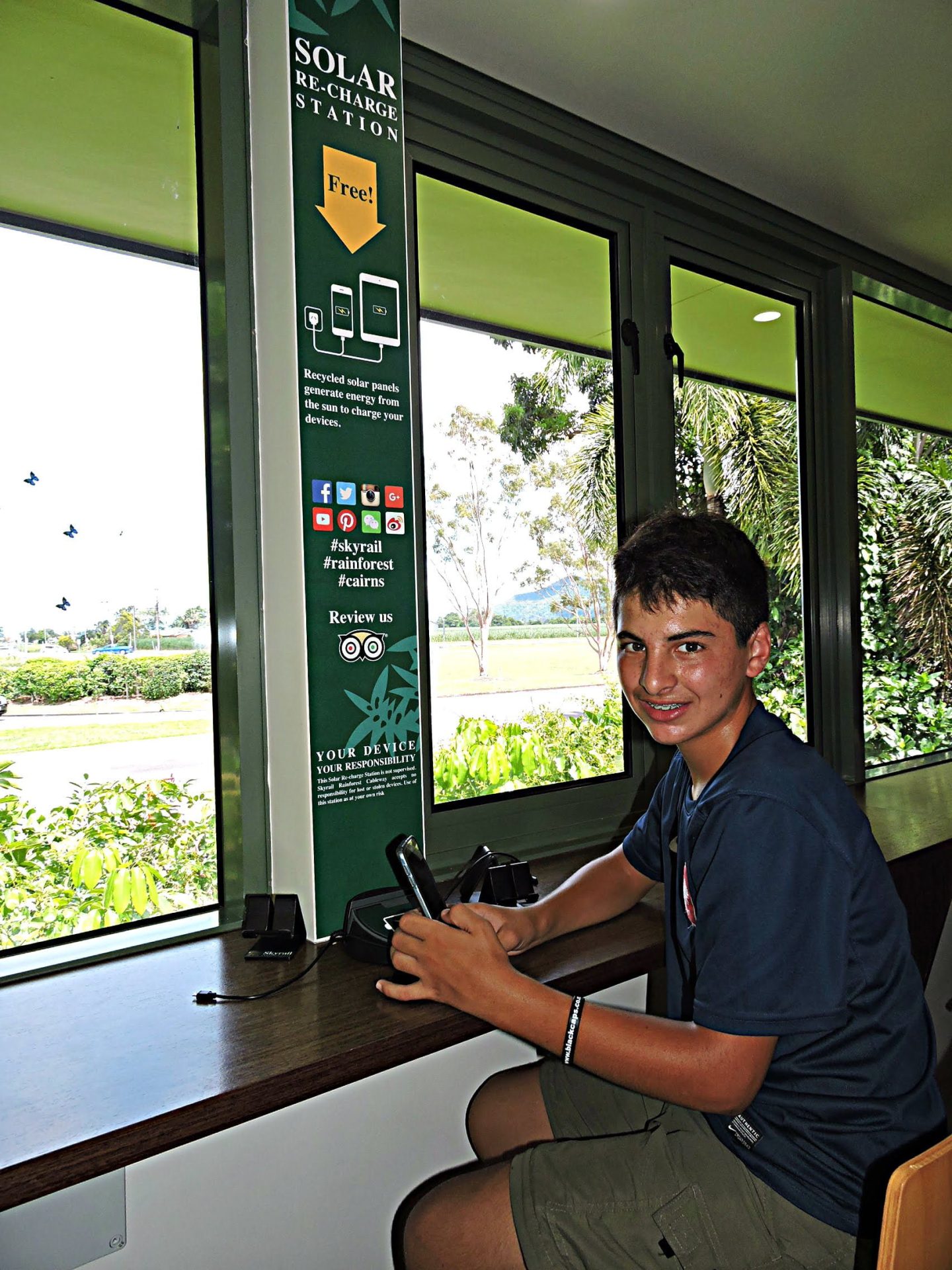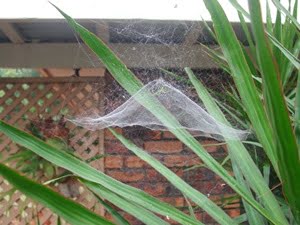Discover tropical rainforest residents
Wet Tropics World Heritage rainforest, home to a diverse array of tropical rainforest residents
Discover tropical Rainforest Residents with us in Australia’s World Heritage listed Tropical Rainforest, a living museum and home to a diverse array of animal life and tropical rainforest residents. It is the world’s oldest continually surviving tropical rainforest on Earth with over 130 million yeas of evolution and history. Some of the flora and fauna we see today in the tropical rainforest dates back to when dinosaurs roamed the Earth. The biodiversity and habitat of the ancient rainforest has created a perfect home for many endemic Australian animals.

The worlds first songbirds, the Golden Bowerbird
Tropical rainforest residents, feathered friends
The tropical rainforest habitat is home to 40% of Australia’s bird species. One of the oldest tropical rainforest residents is the Golden Bowerbird (Prionodura Newtoniana), which dates back 56 million years ago and was one of the first songbirds in the tropical rainforest. The golden bowerbird is the smallest of the bowerbirds, and a sighting is sought after by birdwatchers. The male bowerbird builds elaborate structures from twigs before intricately decorating them using colourful berries and plants to attract female bowerbirds. The male bowerbirds are playing their part in cultivating the ancient rainforest by helping with seed dispersal.

Lumholtz’s tree-kangaroo spotted during Skyrail’s immersive ancient rainforest experince
Tropical rainforest residents, tree dwelling marsupials
The Wet Tropics World Heritage rainforest is also home to 35% of Australia’s mammal species including possums, rats, bats and tree kangaroos. The Wet Tropics is home to a very special rainforest resident, the Lumholtz’s tree-kangaroo which stand no taller than 60cm but has a tail up to one metre long. Perched high above the forest floor you may be lucky enough to see a Lumholtz tree kangaroo (Dendrolagus Lumholtzi), sometimes sighted around towers 10 and 11 of the Skyrail experience. Tree kangaroos have been dwelling in the tropical rainforest for more than 5 million years, jumping and gliding through the canopy with ease. Tree kangaroos mostly sleep during the day in basket ferns high up in the trees but are quite active during the night where they feast on leaves, flowers, fruits, and insects. Keep your eyes open for the tree kangaroos as you glide smoothly just metres above the canopy during a Skyrail experience.

Cairns Birdwing butterfly
Tropical rainforest residents, most colourful
What we see from the gondolas whilst gliding over the rainforest canopy most often are butterflies. 60% of Australia’s butterfly species can be seen in the Wet Tropics rainforest and probably the most identifiable, is the Ulysses butterfly (Papilio Ulysses). A swallowtail species with unmistakable bright markings, electric blue upper wings trimmed in black. It is because of this bright blue colour they stand out in the rainforest and have adapted a frantic flying pattern to avoid predators but look spectacular flying through the deep shades of green in the canopy.
The largest Australian species of butterfly is the Cairns Birdwing (Ornithoptera Euphorion). The male birdwing is green, gold and black but the females are black and white only, with a wingspan of up to 18cm. The tropical rainforest is the perfect habitat for the Cairns Birdwing butterfly.

Boyd’s Forest Dragon
Tropical rainforest Residents, scaley friends
The tropical rainforest is also home to 20% of Australia’s reptile species but, in particular the Boyd’s Forest Dragon (Hypsilurus Boydii) which is endemic to this area and unlike other lizards it does not basque in the sun, making the wet tropics rainforest it’s perfect home as it adjusts its body temperature to its surroundings. Boyd’s Forest Dragon has a body length of up to 15cm but it’s tail can be up to twice the length of it’s body, meaning some of these dragons can grow up to 45cm! They are apt at rainforest camouflage, colours of browns, greys and greens, allowing them to disappear into their rainforest surroundings… seeing one takes a very sharp eye!
This is just a few of the endemic tropical rainforest residents, taking shelter in the tallest of trees, making homes in basket ferns and camouflaging themselves into the landscape. Their survival is dependent on the rich biodiversity of flora provided by the tropical rainforest. Explore flora of the tropical rainforest in part 4 of this blog series.
Pt 4 | Explore Flora of the tropical rainforest
Back to Pt 1 | Wet Tropics World Heritage rainforest
Back to Pt 2 | Rich biodiversity of the tropical rainforest

